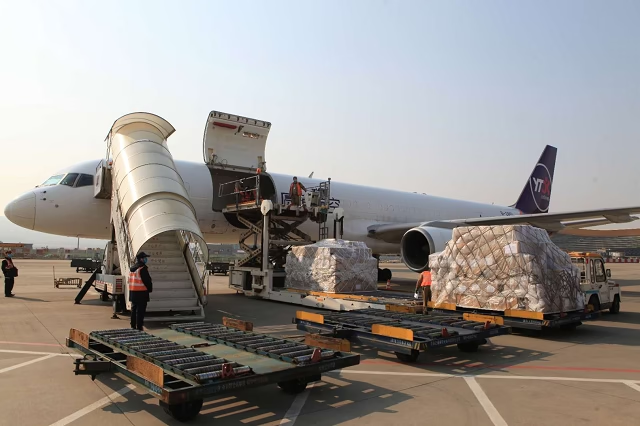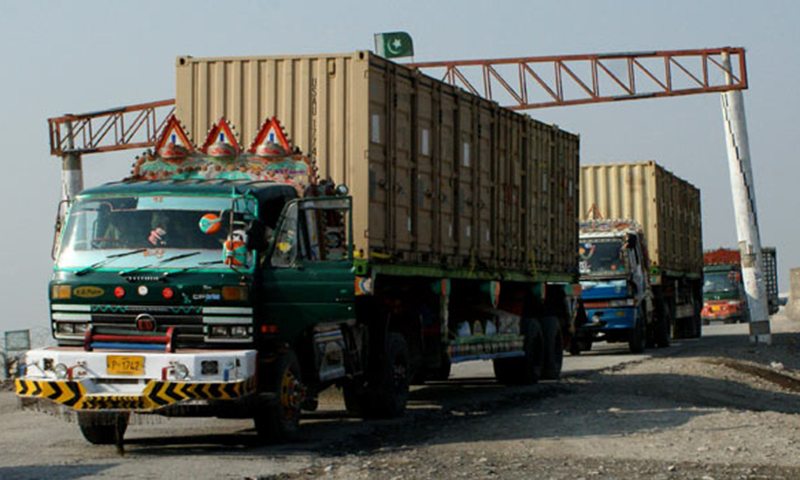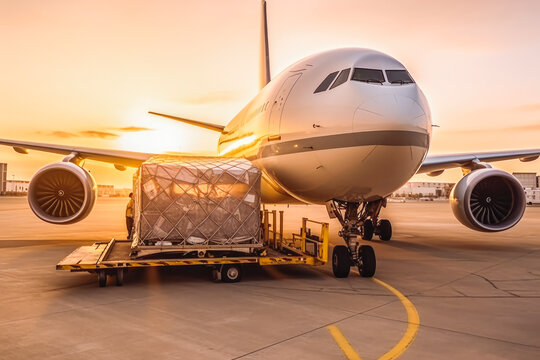Introduction
The economic partnership between Pakistan and China has entered a new era, driven primarily by the development of cargo routes under the China–Pakistan Economic Corridor (CPEC). These routes have become the backbone of regional trade, enabling faster, safer, and more cost-effective movement of goods between China, Pakistan, and beyond.
From the high-altitude Khunjerab Pass to the deep waters of Gwadar Port, the Pakistan–China cargo network is reshaping regional logistics. This article breaks down how CPEC cargo routes work, why they matter, and how they are boosting trade across Asia.
What Are Pakistan–China Cargo Routes?
Pakistan–China cargo routes are multi-modal transport corridors built under CPEC, designed to facilitate the movement of goods across borders through:
-
Land routes (Karakoram Highway, Western & Eastern CPEC routes)
-
Maritime routes (Gwadar Port & Karachi Ports)
-
Air cargo connections (direct China–Pakistan cargo flights)
-
Railroad upgrades (ML-1 modernization)
Together, they form a seamless logistics system that links western China’s Xinjiang province to Pakistan’s major cities and seaports, and onward to global markets.
How CPEC Cargo Routes Boost Trade
CPEC’s cargo routes are not just infrastructure—they are trade accelerators. Here’s how they create a significant trade boost:
1. Reduced Transport Time and Costs
One of the biggest advantages of the new cargo routes is the dramatic reduction in delivery time.
Key Improvements
-
The Kashgar–Khunjerab–Islamabad route now takes less time due to improved road quality.
-
Under the TIR (Transports Internationaux Routiers) system, shipments from China to the UAE via Pakistan now reach their destination in 10 days instead of 30+.
-
Logistics costs for Pakistan-bound goods have dropped by 20–30% in many categories.
These reductions help both countries expand trade while improving the competitiveness of exported goods.
2. Direct Access to Global Markets via Gwadar Port
Gwadar Port is the southern anchor of CPEC and the gateway to international trade routes.
Why Gwadar Matters
-
Gives China direct access to the Arabian Sea.
-
Reduces reliance on the longer Malacca Strait shipping route.
-
Serves as a regional transshipment hub for South Asia, the Middle East, and East Africa.
For Pakistan, Gwadar means:
-
More foreign ships
-
More regional transit trade
-
More jobs in logistics, warehousing, and shipping
Gwadar Free Zone is also attracting investment in cold storage, automotive parts, fisheries, food processing, and logistics facilities, enhancing the port’s cargo-handling capacity.
3. Strengthening Pakistan’s Role as a Regional Transit Hub
Pakistan’s location makes it a natural bridge between China, Central Asia, the Middle East, and South Asia.
Through CPEC cargo routes, Pakistan is rapidly emerging as a regional logistics connector, providing transit services to:
-
China
-
Afghanistan
-
Uzbekistan
-
Tajikistan
-
Kazakhstan
-
Gulf countries
Pakistan’s highways and ports are increasingly used for international freight, generating billions in potential transit revenue.
4. Expansion of Air Cargo Between Pakistan and China
In addition to land and sea routes, CPEC has encouraged the launch of dedicated air cargo links.
Major Air Cargo Routes Include:
-
Urumqi ↔ Islamabad
-
Chengdu ↔ Karachi
-
Kunming ↔ Lahore
-
Nanning ↔ Sialkot
These routes enable:
-
Faster movement of high-value goods
-
Efficient trade of fresh food products, seafood, fruits, and flowers
-
Growth in e-commerce shipments between Pakistan and China
For Pakistan’s SMEs and exporters, air cargo offers a faster path to China’s massive consumer market.
5. Integration of SEZs With Cargo Routes
Special Economic Zones (SEZs) built under CPEC are strategically located along major cargo corridors.
Key SEZs Connected to Cargo Routes
-
Rashakai SEZ (Khyber Pakhtunkhwa)
-
Dhabeji SEZ (Sindh)
-
Allama Iqbal Industrial City (Punjab)
-
Gwadar Free Zone
These SEZs support:
-
Manufacturing
-
Warehousing
-
Export processing
-
Technology and machinery assembly
By linking industrial activity directly with cargo routes, Pakistan is developing end-to-end supply chain capabilities.
6. Improved Customs, Documentation, and Digital Logistics
CPEC has accelerated modernization within Pakistan’s customs and logistics systems.
Upgrades Include:
-
Digital cargo tracking & monitoring
-
ICD (Inland Container Depot) expansion
-
Border automation systems
-
Unified customs clearance under TIR
-
Electronic cargo manifests for faster processing
These innovations reduce delays at ports and borders, ensuring smoother, faster, and more transparent cargo movement.
Economic Benefits of CPEC Cargo Routes
1. Increased Pakistan-China Trade
Bilateral trade has crossed $23 billion, boosted by smoother logistics and lower costs.
2. Job Creation and Industrial Growth
Thousands of jobs have been created in:
-
Transportation
-
Warehousing
-
Port services
-
Construction
-
Manufacturing
Industrial zones and logistics centers continue expanding employment opportunities.
3. Higher Foreign Investment
Improved logistics attract investors from:
-
China
-
Turkey
-
UAE
-
Central Asia
-
Europe
Gwadar and SEZs are becoming hotspots for foreign companies.
4. Reduced Supply Chain Risks
Diversified routes reduce dependency on traditional supply chains and mitigate geopolitical risks.
Strategic Importance of Pakistan–China Cargo Routes
Beyond economics, these routes hold major geopolitical value:
-
China gains a secure overland path to the sea.
-
Pakistan strengthens its regional influence.
-
Central Asian countries gain access to warm waters.
-
Gulf states and China benefit from faster trade links.
This makes the corridor one of the most strategically important trade routes in Eurasia.
Challenges Still Ahead
Despite impressive progress, some challenges need addressing to realize full potential:
1. Upgrading Feeder Roads and Railways
Local connectivity still needs improvement, especially for:
-
Rural areas
-
Industrial estates
-
Dry ports
The completion of Railway ML-1 is critical.
2. Ensuring Security Across Routes
Consistent security is required in:
-
Balochistan
-
Northern mountainous regions
Collaborative measures between government and local communities are vital.
3. Streamlining Customs and Border Management
Despite improvements, some bottlenecks remain in:
-
Documentation
-
Vehicle checks
-
Coordination between agencies
4. Climate and Terrain Challenges
Mountain routes can face:
-
Landslides
-
Harsh winters
-
Weather closures
Climate-resilient infrastructure is essential.
The Future: A Fully Connected Trade Corridor
In the coming years, Pakistan–China cargo routes will become even more efficient with:
-
Completion of ML-1 railway modernization
-
Expansion of Gwadar Free Zone Phase II
-
Introduction of smart logistics technologies (AI, IoT, blockchain)
-
Growth of cross-border e-commerce
-
Stronger integration with Central Asia and Middle East trade corridors
Pakistan is on track to become a $100–150 billion regional logistics economy by 2035.
Conclusion
The Pakistan–China cargo routes created under CPEC are redefining trade in the region. Faster transportation, greater connectivity, and modern logistics infrastructure have opened new economic possibilities for Pakistan while strengthening China’s trade links.
These routes are more than highways and ports—they are pathways to prosperity, regional integration, and long-term economic transformation.
With continued investment, policy reforms, and regional cooperation, Pakistan is set to become a major logistics and trade hub, connecting continents and shaping the future of global trade.


